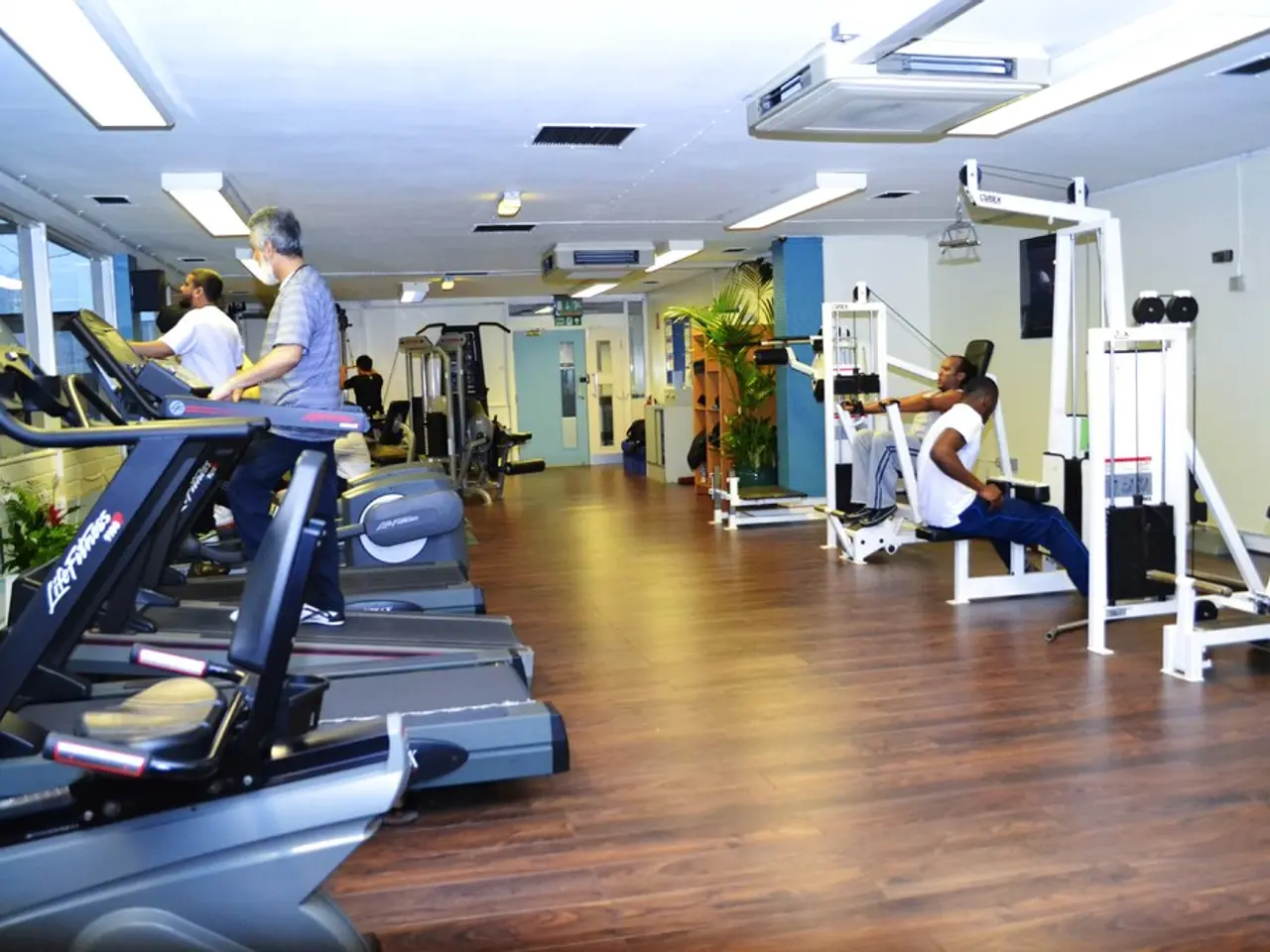Swift Strategies for Combating Workplace Lethargy Caused by Sitting Too Long.
In today's sedentary work environment, it's essential to incorporate physical activity into your daily routine to combat fatigue and improve posture. Here are some straightforward exercises you can easily incorporate into your workday to reap the benefits.
## Quick Office Exercises
### Desk Stretch Sessions
Duration: 5-10 minutes, daily Benefit: Relieves back pain, improves posture, and reduces tension.
Examples: - Chest Opener Stretch: Sit at the front of your chair, grab the sides or back, and pull your chest forward by moving your shoulder blades together. Hold for 15 seconds and repeat 2-3 times. - Neck Rolls: Roll your neck gently in both directions. - Seated Spinal Twists: Rotate your upper body to each side.
### Standing Desk Exercises
Duration: 30 seconds to 1 minute, multiple times a day Benefit: Improves circulation, reduces tension, and enhances posture.
Examples: - Arm Circles: Extend your arms sideways and make small circles forward and backward. - Oblique Twists: Stand with feet hip-width apart, place hands on hips, and twist your torso from side to side. - Wall Sits: Stand with your back against a wall, slide down until thighs are parallel to the floor, and hold for 30-60 seconds.
### Micro-Workouts
Duration: 5 minutes, multiple times a day Benefit: Boosts energy, combats sedentary behavior, and encourages regular physical activity.
Examples: - Squats: Stand and perform 10-15 squats. - Quick Push-Ups: Use your desk edge for support and perform a few push-ups. - Walking Meetings: Replace traditional sit-down meetings with walking ones.
### Strength and Posture Exercises
Duration: 1-2 minutes, multiple times a day Benefit: Strengthens core muscles, improves posture, and reduces fatigue.
Examples: - Two-Minute Plank Challenge: Daily plank sessions with progressive hold times. - Wall Sit Competitions: Hold a wall sit for one minute between meetings.
## Tips for Incorporation
- Set Reminders: Use alerts to remind you to exercise throughout the day. - Create a Routine: Incorporate exercises into your daily schedule, such as before or after meetings. - Involve Colleagues: Encourage team members to join, making it more engaging and enjoyable.
By incorporating these exercises into your workday, you can effectively reduce sedentary fatigue and improve your posture. Sitting for long hours at a desk can lead to back pain, tight hips, poor circulation, and long-term health issues like obesity and cardiovascular disease.
These exercises can be done discreetly under the desk whenever possible. Performing Move #1 (Seated Spinal Twists) every hour can help reduce lower back tension. Pairing Move #3 (Shoulder Rolls) with deep breaths can increase oxygen flow to the brain. Performing Calf Raises and Ankle Rolls can help maintain blood flow in the lower limbs and prevent swelling or stiffness during prolonged sitting hours.
To do a Chair Squat, stand in front of your chair with feet shoulder-width apart, lower yourself as if sitting down, then push back up just before touching the chair seat. Perform 10-15 reps every few hours. Start with one set of Move #4 (Desk Push-Ups) and work your way up, adding tempo or hold to increase difficulty.
Remember, these exercises are designed to complement, not replace, a regular exercise routine. Stay consistent, and you'll soon notice improvements in your overall health and wellbeing.
- Incorporating cardio exercises like arm circles and quick push-ups into the workday boosts energy and combats sedentary behavior.
- Desk stretch sessions, such as chest openers and neck rolls, relieve back pain, improve posture, and reduce tension.
- Mental health can be improved through mindfulness practices like pairing shoulder rolls with deep breaths, increasing oxygen flow to the brain.
- Strength exercises, like the two-minute plank challenge and wall sit competitions, strengthen core muscles, improve posture, and reduce fatigue.
- By regularly practicing these exercises during the workday, one can combat sedentary fatigue and promote wellness.
- Fitness and exercise are an essential part of a productive workplace, which is why workplace-wellness programs often encourage employees to incorporate fitness and exercise into their daily routines.
- Incorporating exercises like seated spinal twists every hour can help maintain flexibility and prevent lower back tension.
- Calf raises and ankle rolls can help maintain blood flow in the lower limbs and prevent swelling or stiffness during prolonged sitting hours.
- Engaging in regular exercise and raising awareness about the benefits of fitness and exercise promotes health and personal growth.
- The science of fitness and exercise is constantly evolving, so continuous learning and self-development in the area of education and self-development can contribute to overall well-being and ventures into the realms of fitness-and-exercise, health-and-wellness, and personal-growth.








